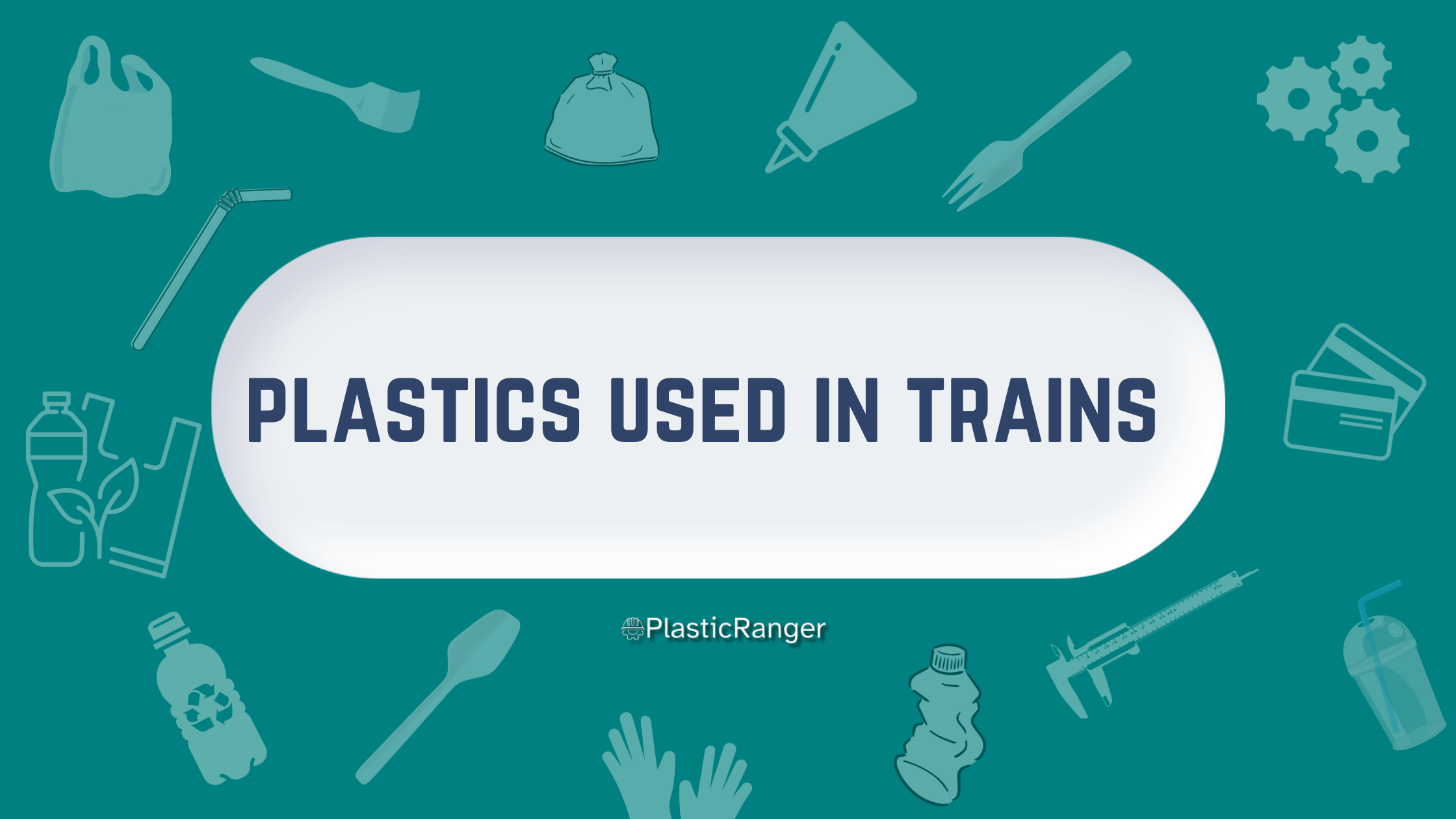Trains have been an integral mode of transportation for over a century, and as technology has advanced, so have the materials used in their construction. Plants are prominent in modern train manufacturing with their lightweight, durable, and moldable properties.
Plastics in Trains: A Comprehensive Look
Several plastics have been employed to enhance train performance, safety, and aesthetics from interiors to exteriors.
This article delves into the various plastics used in trains and their unique roles.

Polycarbonate (PC)
Application: Windows and Glazing
Polycarbonate is a transparent and impact-resistant plastic. Its high clarity and resistance to breakage make it an excellent choice for train windows. This ensures that even under severe external impacts, such as stone hits, the windows remain intact, ensuring safety for the passengers. Additionally, polycarbonates can be molded into curved shapes, which is beneficial for panoramic train windows.
Polyvinyl Chloride (PVC)
Application: Flooring, Wall Coverings, and Cable Insulations
PVC is a UV resistant plastic with good fire resistance properties. PVC is commonly used for flooring in trains due to its durability and ease of cleaning. Additionally, PVC wall coverings are preferred for their ability to resist stains and wear. In electrical applications, PVC is used for cable insulations, providing safety from potential electrical hazards.
Acrylonitrile Butadiene Styrene (ABS)
Application: Seat Components, Overhead Bins, and Interior Panels
ABS is known for its toughness, Density, and excellent surface finish. These properties suit interior components like seats, overhead storage bins, and decorative panels. ABS parts can also be easily painted or plated, providing an aesthetic appeal to the train interiors.
Polyetherimide (PEI)
Application: Interior Elements Exposed to High Temperatures
PEI has exceptional heat resistance and flame retardancy. Given these characteristics, it’s frequently used in parts of the train interior exposed to high temperatures, such as areas near heaters or lighting fixtures.
Polyamide (Nylon)
Application: Gears, Bearings, and Other Mechanical Components
Polyamides, known as Nylons, are often used for mechanical train applications. Their excellent wear resistance, high melting point, and self-lubricating properties make them ideal for gears, bearings, and other moving parts, ensuring smooth train operations.
Polypropylene (PP)
Application: Chairs, Tables, and Interior Fittings
Polypropylene is lightweight, durable, and offers resistance to chemicals and moisture. These properties make it suitable for interior fittings like chairs and tables. Its lightness contributes to the overall reduction in train weight, enhancing efficiency.
Thermoplastic Polyurethane (TPU)
Application: Sealing Gaskets and Sound Insulation
TPU provides excellent flexibility, high wear resistance, and good sound insulation. It is frequently employed in sealing gaskets, ensuring that train compartments remain airtight, and in sound insulation materials, providing a quiet ride for passengers.
Benefits of Using Plastics in Train Manufacturing
Weight Reduction: One of the primary advantages of plastics is their lightweight nature. Plastics can significantly reduce a train’s weight, increasing energy efficiency and potentially higher speeds.
Corrosion Resistance: Unlike metals, plastics don’t corrode, ensuring longevity and reduced maintenance costs.
Design Flexibility: Plastics can be molded into complex shapes through injection molding, 3D printing, and extrusion, giving designers more flexibility and creativity.
Cost-effective: Plastics can be more cost-effective in material and production costs than metals.
Safety: Modern plastics are designed to be flame-retardant, reducing the risk of fire and ensuring the security of passengers.
Advancements in the Use of Plastics for Trains
Recycled Plastics: With growing environmental concerns, the train manufacturing industry increasingly uses recycled plastics. This not only reduces waste but also lowers carbon footprints.
Composites: Composite materials, which combine plastics with other materials (like fiberglass or carbon fiber), are gaining popularity. These offer improved strength-to-weight ratios and excellent durability.
Smart Plastics: Advances in material science have led to the development of “smart” plastics. These can change properties based on external stimuli. For instance, windows made of electrochromic plastics can automatically tint based on sunlight levels.
3D Printing: This innovative manufacturing method creates custom plastic parts for trains, speeding up production and reducing waste.
Summing Up
The integration of plastics in train manufacturing is not just a passing trend; it’s a significant shift towards more efficient, safer, and sustainable rail travel. As advancements continue, the reliance on plastics and polymer composites is only expected to grow. The future of train travel will undoubtedly see more innovations, and plastics will remain at the forefront of these evolutions.
Quick Navigation
